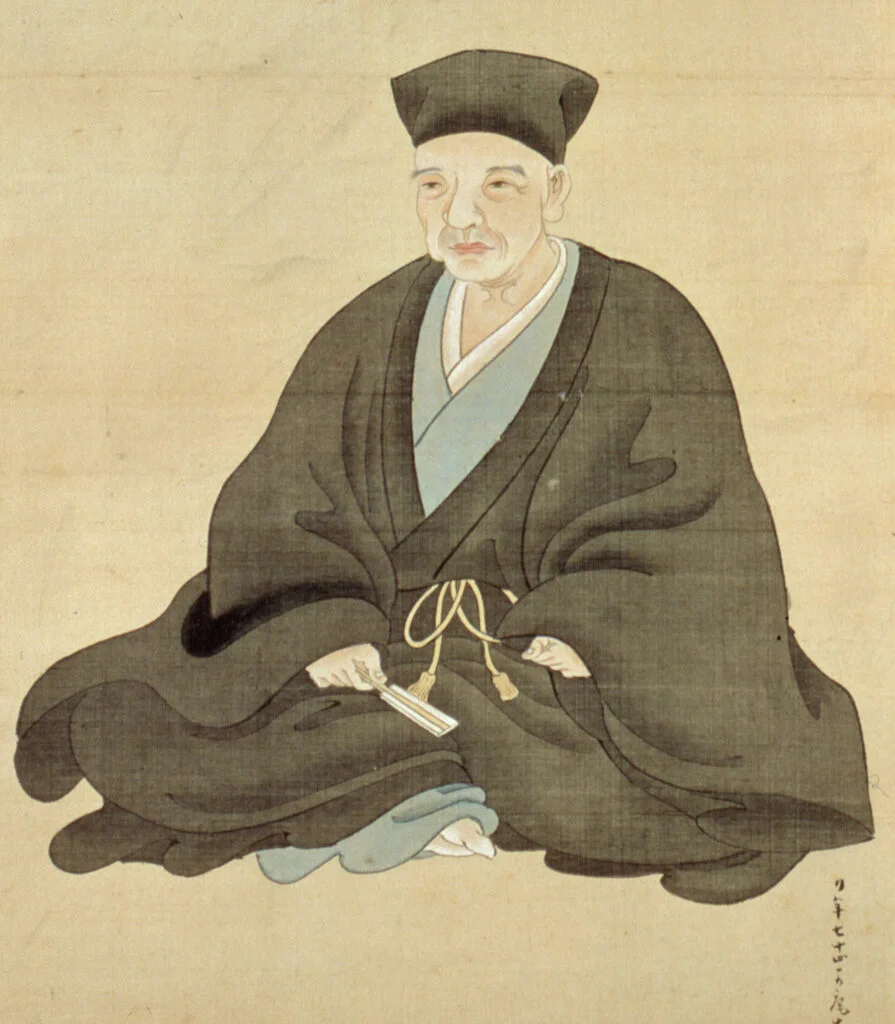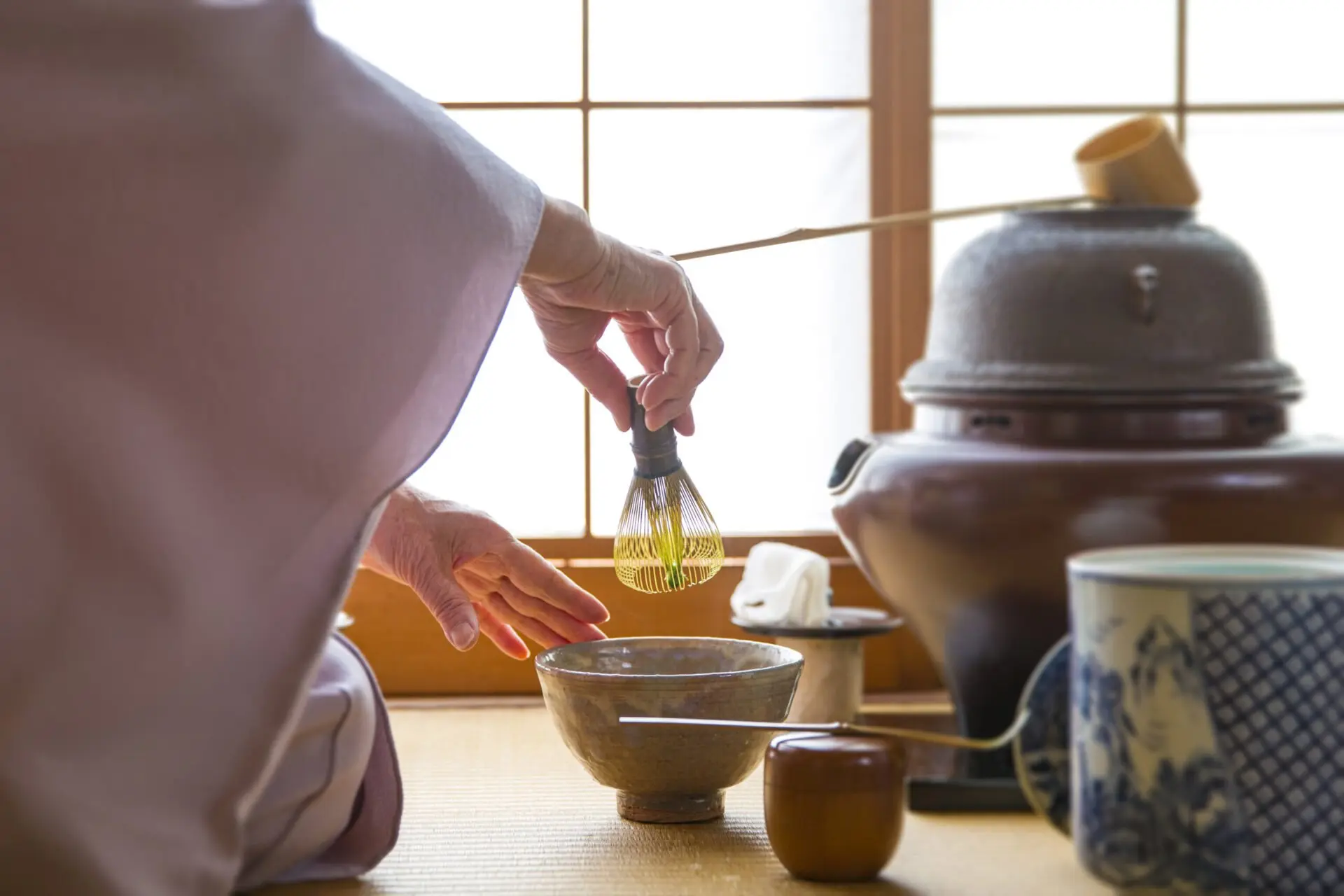The Intertwined History of Wagashi and Japanese Tea
Japanese tea ceremony culture, refined over a long history, is today represented by three main schools. Known as the “Three Sen Houses” (Sansenke), these schools – Omotesenke, Urasenke, and Mushakojisenke – each have their unique practices and philosophies that shape Japanese tea culture.
Omotesenke, founded by Sen Sōsa, great-grandson of Sen no Rikyū, emphasizes the spirit of “harmony, respect, purity, and tranquility” (wa-kei-sei-jaku).
Urasenke, established by Sen Sōshitsu, the second son of Sen Sōtan (who was Sen Sōsa’s younger brother), adds the concept of “one time, one meeting” (ichi-go ichi-e) to these principles.
Mushakojisenke, founded by Sen Sōshu, the third son of Sen Sōtan, upholds the spirit of “tea and Zen are one flavor” (cha-zen ichi-mi).
These three schools have distinct preferences for tea utensils and wagashi, creating unique atmospheres for their tea ceremonies. For instance, Omotesenke prefers square-shaped rakugan sweets, while Urasenke favors round ones.
While embracing this diversity, Japanese tea ceremony shares an aesthetic sensibility and spirituality centered on wagashi and Japanese tea. Let’s explore how wagashi and Japanese tea developed and became deeply intertwined with tea ceremony culture, even before the establishment of these three schools.
The Introduction of Tea and Early Tea Culture in Japan
Tea is believed to have been introduced to Japan during the Nara period (710-794 CE). Initially valued for its medicinal properties, tea became a luxury item enjoyed by aristocrats during the Heian period (794-1185 CE). At this time, tea was primarily consumed in the form of matcha, and tea gatherings began to be held.
However, the culture of pairing wagashi with tea had not yet been established in this era. The sweets served at tea gatherings were mainly imported Chinese confections and fruits.
Kamakura Period: Foundations of Tea Ceremony and Birth of Wagashi
During the Kamakura period (1185-1333 CE), Zen Buddhist monks further spread tea culture. Notably, the matcha preparation methods brought back from China by Zen master Eisai laid the foundation for future tea ceremonies.
Simultaneously, a uniquely Japanese confectionery culture began to develop. Sweets made from rice and azuki beans started to be created and enjoyed with tea. This period marked the beginning of the pairing of tea and wagashi.
Muromachi Period: Establishment of Tea Ceremony and Evolution of Wagashi
The Muromachi period (1336-1573 CE) saw tea ceremony becoming more refined and closer to its current form. The concept of “wabi-cha” (rustic tea) was born, established by figures such as Murata Jukō and Takeno Jōō, emphasizing simplicity and tranquility in the tea ceremony.
During this era, wagashi also evolved significantly. Sweets with refined sweetness using sugar were developed to complement the taste of tea. Confections served at tea ceremonies became known as “cha-gashi” and were chosen to reflect the season and the theme of the gathering.
Azuchi-Momoyama Period: Sen no Rikyū and the Perfection of Tea Ceremony
Sen no Rikyū, active during the Azuchi-Momoyama period (1573-1603 CE), is known for elevating tea ceremony to an art form. Rikyū deepened the spirit of “wabi-cha” and pursued aesthetic ideals in every detail, from the tea room and utensils to the sweets served.
During Rikyū’s time, wagashi became an indispensable element of tea ceremony. Sweets that enhanced the flavor of tea and expressed the atmosphere of the tea gathering were sought after, leading artisans to create various types of wagashi with their skills and creativity.

Edo Period: Popularization of Tea Ceremony and Diversification of Wagashi
In the Edo period (1603-1868 CE), tea ceremony spread widely among samurai and townspeople, becoming more accessible to the general public. Concurrently, wagashi culture greatly developed. The widespread availability of sugar led to the creation of more delicate and diverse wagashi.
During this era, the aforementioned three schools of tea ceremony were established, each developing preferences for different types and shapes of wagashi. This further contributed to the diversity in the world of wagashi.
Meiji Period Onward: Preserving Tradition and New Challenges
From the Meiji period (1868-1912 CE) onward, while influenced by Western culture, tea ceremony and wagashi culture have been carefully preserved as Japanese traditions. At the same time, both have continued to evolve, incorporating new techniques and ingredients.
In modern times, while preserving the traditional spirit of tea ceremony, a culture of enjoying wagashi and Japanese tea with more freedom of expression has emerged. For example, matcha-flavored desserts and innovative Japanese tea drinks have gained popularity as new forms of “wa” (Japanese-style) flavors.
Conclusion: The Deepening Bond Between Wagashi and Japanese Tea Through Time
The history of wagashi and Japanese tea can be seen as a microcosm of Japanese culture. Both have influenced each other over time, leading to their present forms. The combination of wagashi and Japanese tea, refined within the framework of tea ceremony culture, has become an important element expressing Japanese aesthetic sensibility, seasonal awareness, and spirit of hospitality.
The next time you have the opportunity to enjoy wagashi and Japanese tea, why not reflect on the long history and cultural background imbued in each bite and sip? Surely, you will make new discoveries and feel moved by the experience.
